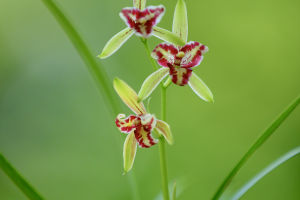Lilies, with their graceful petals and intoxicating fragrance, have captivated human hearts and minds for centuries.
These elegant flowers are not only admired for their beauty but are also rich in symbolism and meaning.
In various cultures and contexts, lilies convey messages of purity, renewal, and love. Let’s delve into the language and symbolism of lilies and explore why they hold such a revered place in the floral world.
Historical Significance
Lilies have a long and storied history, dating back to ancient civilizations. In ancient Greece, lilies were believed to be related to Hera, symbolizing purity and divine motherhood. The Greeks and Romans often used lilies in their art and mythology, associating them with the afterlife.
In the other culture, the lily is a symbol of Mary’s purity. The Madonna lily, in particular, is often depicted in art and iconography, representing the Annunciation and Mary’s divine grace. This association has made lilies a popular choice for other ceremonies.
Symbolism Across Cultures
The symbolism of lilies varies across different cultures, but certain themes remain consistent. One of the most prominent symbols associated with lilies is purity. Their pristine, white petals evoke a sense of cleanliness and virtue, making them a popular choice for weddings.
Lilies are often used in weddings because they are believed to bring a hundred years of love and good luck. Additionally, lilies are associated with motherhood and fertility, making them a common gift for new mothers.
In Victorian England, the language of flowers, or floriography, assigned specific meanings to different flowers. Lilies were a symbol of refined beauty and purity. The white lily, in particular, conveyed a message of modesty and virtue, while the orange lily represented passion and confidence. This coded language allowed people to express their feelings and intentions through the flowers they gifted and received.
Varieties and Their Meanings
There are many different varieties of lilies, each with its own unique symbolism. Here are some of the most popular types and their associated meanings:
1. White Lily: Symbolizing purity and virtue, white lilies are often used in ceremonies and bridal bouquets. They represent a sense of innocence and a new beginning.
2. Movable feast Lily: Specifically associated with movable feast and the resurrection, movable feast lilies are a symbol of hope and renewal. Their trumpet-shaped blooms are said to announce the arrival of spring and new life.
3. Stargazer Lily: With its vibrant pink and white petals, the stargazer lily represents ambition and aspiration. Its bold appearance makes it a symbol of achieving one’s dreams and reaching for the stars.
4. Tiger Lily: Known for its striking orange color and black spots, the tiger lily symbolizes wealth and pride. In some cultures, it is also associated with bravery and courage.
5. Calla Lily: Although not a true lily, the calla lily is often included in the lily family due to its similar appearance. It symbolizes magnificence and beauty, making it a popular choice for elegant floral arrangements.
Lilies in Art and Literature
Lilies have been a source of inspiration for artists and writers throughout history. Their delicate beauty and profound symbolism have made them a favorite subject in various forms of art. In literature, lilies are often used as metaphors for purity, beauty, and transience.
Claude Monet, the famous Impressionist painter, created a series of paintings featuring water lilies in his garden at Giverny. These works capture the serene beauty of lilies floating on the water’s surface, evoking a sense of peace and tranquility. Monet’s water lilies have become iconic, symbolizing the harmony between nature and art.
In poetry, lilies are frequently used to convey deep emotions and themes. Alfred Lord Tennyson’s poem “The Lily” compares the flower’s purity to the innocence of a young girl, highlighting its symbolic connection to virtue and chastity.
The language and symbolism of lilies are deeply rooted in history and culture, making them much more than just beautiful flowers. Their associations with purity, renewal, and love have made them a timeless symbol in various contexts. Whether used in ceremonies, weddings, or works of art, lilies continue to captivate and inspire with their elegance and profound meaning. As you admire these exquisite blooms, you are reminded of the enduring power of nature’s beauty and the rich tapestry of symbolism that flowers bring to your lives.


